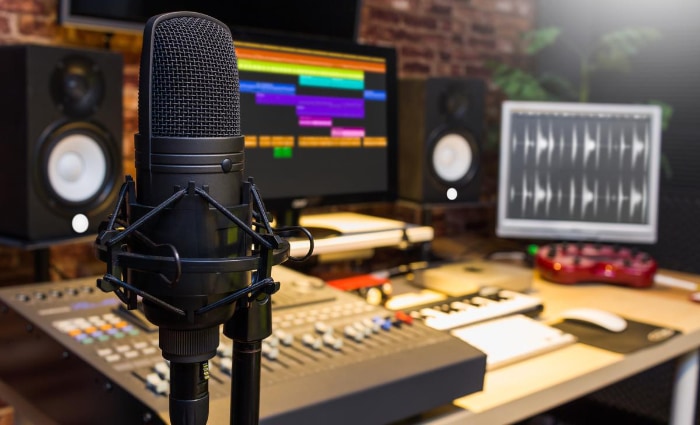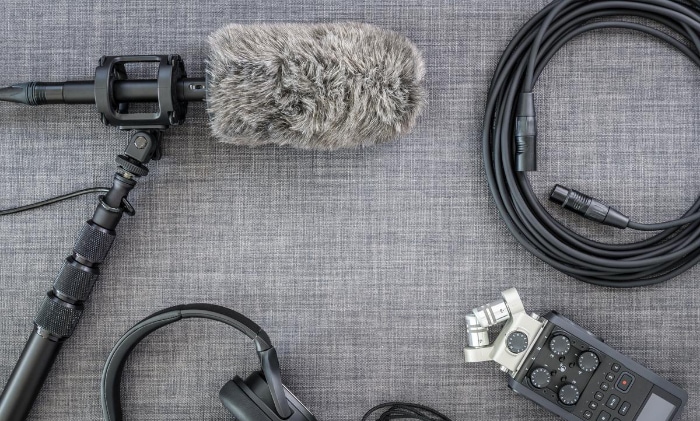Mono vs. Stereo Sound: Audio Quality Compared

Audio can make or break an experience, from the haunting melodies of a cinematic soundtrack to the resonant chords of a live concert. When you’re absorbed in that experience, have you ever paused to consider what’s tickling your eardrums so delightfully?
Enter the intriguing world of Mono and Stereo sound—two formats that may seem trivial, yet hold the power to transform your auditory encounters entirely.
What is Mono Sound?
Mono sound, short for monophonic sound, has been the foundation of audio recording and playback for years. Although considered basic compared to its more modern counterpart, stereo sound, mono has unique characteristics that make it relevant even today.
Definition of Mono Sound
Mono sound is a single-channel audio system. In this format, the same audio signal is sent to both speakers or earpieces, creating a unified sound field. In simpler terms, what you hear from one speaker is precisely the same as what you’ll hear from the other.
Technical Specifications
Single Channel
The single-channel format of mono sound makes it less complicated and easier to manage. Because there’s only one audio signal to worry about, there are fewer variables to handle during both recording and playback.
Microphone Techniques
When recording in mono, you often use a single microphone. This approach results in a unified sound source, ensuring the audio is consistent irrespective of where it is played back.
Typical Use-Cases for Mono
Mono sound finds its applications in various fields for different reasons. Below are some of the common scenarios where mono is preferred.
AM Radio
In AM (Amplitude Modulation) radio broadcasts, simplicity and reliability are crucial. Mono’s single-channel format requires less bandwidth and is more robust over long distances, making it ideal for these types of transmissions.
Old Recordings
Many historical recordings, especially those made before the widespread adoption of stereo sound, are in mono. This includes iconic music albums and noteworthy speeches.
Public Address Systems
In large public spaces like airports or malls, it’s crucial that announcements are clear and audible throughout the area. Mono sound is easier to manage and ensures that the message is consistent, regardless of where someone is standing.
What is Stereo Sound?
While mono sound has its place in the world of audio, stereo sound is often what people think of when they envision a rich, immersive auditory experience. Whether it’s listening to a multi-layered orchestral piece or watching a blockbuster movie, stereo sound offers complexities that mono just can’t match.
Definition of Stereo Sound
Stereo, short for stereophonic, is a two-channel audio system. Unlike mono, where the same sound is played through both speakers, stereo allows for a more nuanced audio experience by using two separate audio channels.
This creates a sense of space and depth that’s especially noticeable when you’re using headphones or a well-calibrated speaker system.
Technical Specifications
Two Channels
Stereo sound fundamentally operates on two audio channels, usually referred to as the left and right channels. This allows for spatial distribution of sound, simulating the way humans naturally perceive audio.
Multiple Microphone Techniques
Recording in stereo often involves the use of more than one microphone. The additional microphones allow for capturing sound from various positions, enhancing the spatial quality of the audio.
Typical Use-Cases for Stereo
Stereo sound is prevalent in various contemporary scenarios, often where the depth and complexity of the audio are essential to the experience.
FM Radio
FM (Frequency Modulation) radio commonly utilizes stereo sound to offer a more dynamic listening experience compared to AM radio.
Modern Recordings
From albums to podcasts, most modern recordings employ stereo sound to give a more lifelike quality to the audio. This allows artists and creators to play with sound placement, producing more engaging and complex pieces.
Home Entertainment Systems
Stereo is the standard for most home entertainment systems, video games, and home theaters. The two-channel setup enhances the overall experience, offering a broad sound stage that gives each instrument, voice, or sound effect its own space within the audio mix.
The Technical Differences

When it comes to making a well-informed choice between mono and stereo sound, knowing their technical differences is invaluable. While both have unique attributes that make them suited for specific applications, understanding how they differ at a technical level will provide greater insight into why one may be preferable over the other in certain situations.
Channel Distribution
The most fundamental difference between mono and stereo sound lies in the number of audio channels they use. Mono operates on a single channel, delivering the same sound to all output devices.
Stereo, on the other hand, uses at least two channels—typically one for the left and one for the right audio output. This multi-channel approach allows for a more intricate sound experience, such as directional audio cues.
Complexity of Sound
The number of channels directly impacts the complexity of the audio. Mono, being a single channel, offers a straightforward and unified audio output.
Stereo provides a richer auditory experience due to its dual channels, which can offer not just depth but also a spatial dimension to the sound.
Equipment Requirements
Mono and stereo also differ in the hardware needed for optimal performance. Mono systems often require less complex setups, usually necessitating only a single microphone and speaker for basic operations.
Stereo systems demand a more sophisticated arrangement, including at least two microphones for recording and multiple speakers or a set of good-quality headphones for playback.
Signal Processing
Audio signal processing in stereo systems is generally more complicated than in mono systems. This complexity arises from the need to manage and sync multiple channels.
In a mono setup, the single channel ensures that the audio remains consistent regardless of the playback device. In contrast, stereo sound may involve various technologies for balancing the two channels, such as equalization and dynamic range compression, to maintain sound fidelity.
Bandwidth Consumption
Lastly, the number of channels affects the amount of data needed for transmission. Mono, with its single channel, is less demanding on bandwidth.
This is why it’s often used in scenarios where bandwidth is limited, such as AM radio. Stereo requires more data due to its multiple channels, making it better suited for applications where bandwidth limitations are less of a concern, like FM radio or home theater systems.
Pros and Cons of Mono Sound
While the realm of stereo sound often grabs more attention due to its complex auditory palette, the simplicity of mono sound offers its own set of advantages and disadvantages. Knowing these can be particularly helpful when you’re deciding which audio format to use for your specific needs.
Advantages of Mono Sound
Hardware Simplicity
Mono sound systems are generally easier to set up and manage. With only one channel to consider, you don’t have to worry about multiple microphones or an array of speakers. This makes mono systems cost-effective and less technically demanding.
Easier Mixing and Management
When dealing with audio editing or live sound mixing, the single-channel nature of mono makes the job considerably more straightforward. There’s only one set of audio data to work with, which streamlines the editing process and reduces the likelihood of errors.
Intelligibility in Noisy Environments
In crowded or noisy environments, mono sound often outperforms stereo in terms of speech intelligibility. The uniform distribution of a single audio channel ensures that spoken words are clear and easily understood, regardless of the listener’s position relative to the sound source.
Disadvantages of Mono Sound
Lack of Audio Depth
Mono sound lacks the spatial qualities that make stereo sound more lifelike and engaging. Because there is only one channel, mono sound does not convey a sense of directionality or depth, making it less immersive.
Limited Auditory Experience
Mono sound doesn’t provide a full range of auditory experiences. In musical contexts, for example, it doesn’t allow for the nuanced panning effects that stereo sound can offer, such as the sense that different instruments are coming from different directions.
Reduced Fidelity in Modern Applications
While mono is sufficient for speech and simple audio playback, it falls short in delivering the high fidelity that modern audiences often expect, especially for applications like music streaming, movies, and video games.
Pros and Cons of Stereo Sound
Stereo sound is often lauded for its rich, immersive qualities, but like any technology, it has its limitations as well as its advantages. Being aware of these can help you make informed choices, whether you’re setting up a home theater, recording a podcast, or simply deciding how to best enjoy your music.
Advantages of Stereo Sound
Enhanced Audio Depth
One of the primary benefits of stereo sound is its ability to provide a sense of depth and space. With two separate channels, listeners can experience audio in a way that mimics natural human hearing, offering a more lifelike and engaging experience.
Improved Directionality
Stereo sound allows for audio cues to come from different directions, enhancing the realism of movies, video games, and certain types of music. This directionality can make for a more captivating and immersive experience.
Creative Potential in Audio Production
Stereo offers artists and audio engineers greater creative freedom. They can use stereo panning to place sounds at various points in the auditory scene, which can add depth and dimension to musical arrangements, podcasts, and other audio projects.
Disadvantages of Stereo Sound
Complexity and Cost
Stereo systems are generally more complicated and expensive to set up than mono systems. The need for multiple microphones, speakers, and additional processing can increase both the initial investment and ongoing maintenance costs.
Mixing Challenges
While stereo offers more creative freedom, it also poses challenges in mixing and audio editing. Managing two or more channels requires a higher level of skill and attention to detail to maintain audio balance and achieve the desired spatial effects.
Limited Applications in Public Spaces
Stereo is not always ideal for public announcements or other applications where clarity and intelligibility are of utmost importance. In such scenarios, the varying audio levels and directions could cause confusion or make the message harder to understand.
Practical Applications – Where to Use What

Deciding between mono and stereo sound is not just a matter of personal preference; it often hinges on the specific needs of a given situation. This section will explore the practical applications where each format shines, helping you make an informed choice for your particular needs.
When to Use Mono Sound
Public Announcements
Mono is the go-to option for public announcement systems in airports, train stations, and stadiums. Here, clarity and intelligibility are more important than a rich auditory experience, making mono an ideal choice.
AM Radio
Due to bandwidth limitations, AM radio commonly employs mono sound. The reduced data requirements make it easier to broadcast over long distances with less concern for signal degradation.
Voice Recordings
For podcasts or other voice-based recordings where the focus is primarily on spoken content, mono is often sufficient. It offers a clear and consistent audio quality that is easy to manage in post-production.
When to Use Stereo Sound
Music Production
In modern music production, stereo is almost universally preferred. It allows for a rich and nuanced sound, giving artists the creative freedom to experiment with audio placement and depth.
Home Entertainment Systems
For watching movies or playing video games, a stereo system can significantly enhance the experience. The dual-channel audio creates a sense of immersion and makes it easier to engage with the content.
FM Radio
FM radio generally uses stereo sound to offer a richer listening experience. The wider bandwidth allows for higher audio fidelity, making it well-suited for music broadcasts.
Live Concerts
In a live concert setting, stereo sound can create a more engaging experience for the audience. It allows for better separation of instruments and vocals, giving a sense of space and dimension that is closer to a live performance.
Hybrid Uses
Some situations might benefit from a combination of both mono and stereo sound. For example, in a live theater production, spoken dialogue might be broadcast in mono for clarity, while music and sound effects use stereo to add depth and dimension.
Conclusion
Choosing between mono and stereo sound involves a nuanced evaluation of both technical aspects and practical applications. While mono offers simplicity, cost-effectiveness, and clarity, especially in noisy environments, it lacks the auditory depth and directional cues provided by stereo sound.
Conversely, stereo enhances the richness and dimensionality of the audio experience but may require more sophisticated equipment and expertise. Each has its domain of excellence—mono excels in public announcements and simple voice recordings, whereas stereo is the go-to choice for music production and home entertainment systems.
Making an informed decision on which format to use will depend on your specific needs, keeping in mind the advantages and disadvantages of each. Therefore, it’s crucial to weigh these factors carefully to optimize your audio experience.


